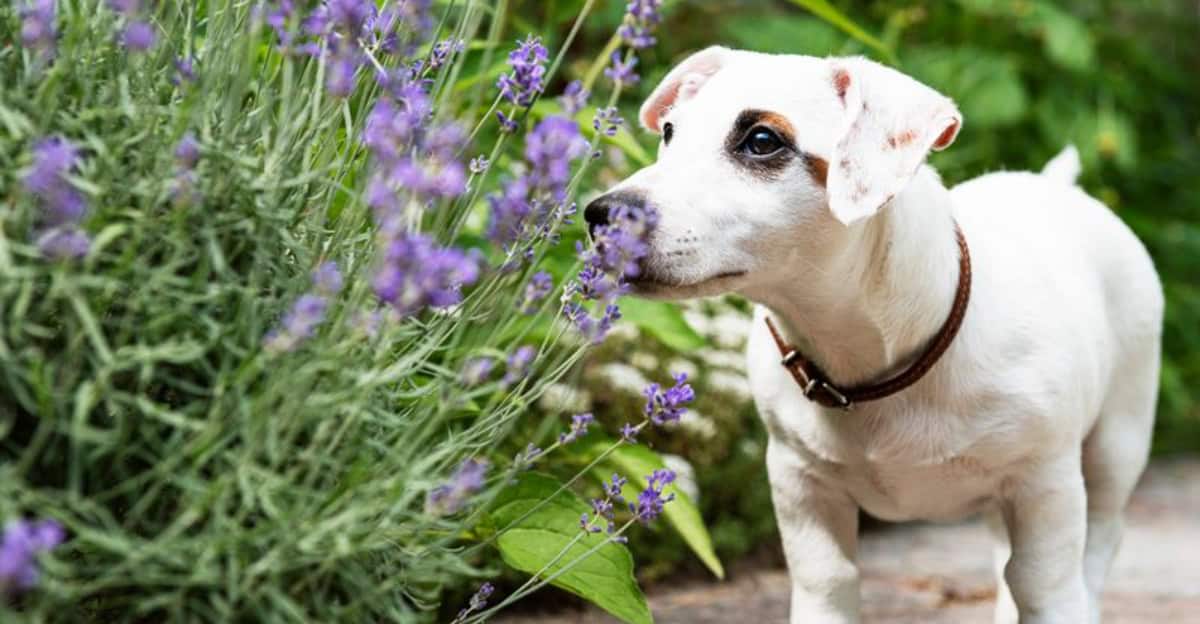Creating a dog-friendly garden requires thoughtful planning and consideration to ensure both beauty and safety for your furry friend.
With the right choices, you can design an outdoor space that both you and your dog will love. Here are 10 quick tips to help you create the perfect garden for your canine companion.
1. Choose Non-Toxic Plants
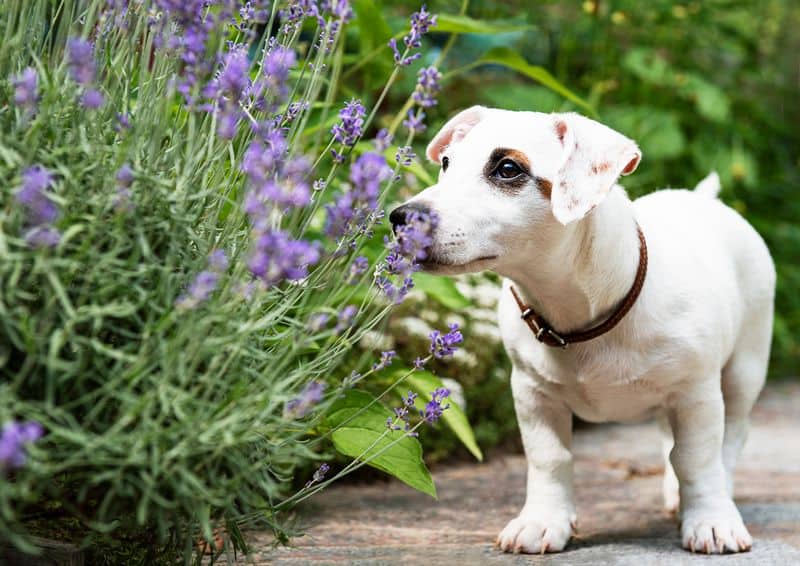
Selecting the right plants is crucial when designing a dog-friendly garden. Avoid toxic plants like lilies, azaleas, and daffodils that can harm your dog if ingested.
Instead, opt for non-toxic options such as sunflowers, roses, and marigolds.
These plants not only add beauty but also ensure the safety of your pet. Consider incorporating a variety of textures and colors to stimulate your dog’s senses while keeping them safe.
A diverse and vibrant garden can provide endless enjoyment for both you and your pet.
2. Create a Digging Area
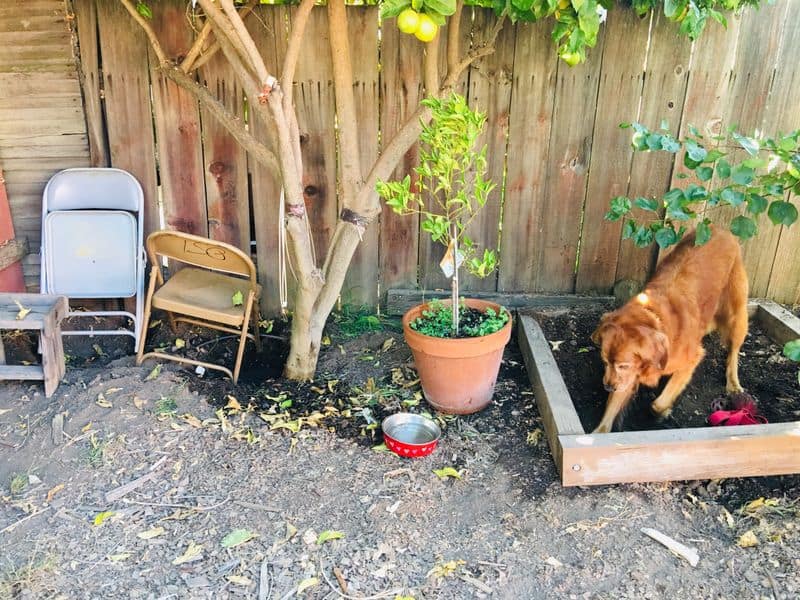
Dogs love to dig, and providing them a designated space for this activity can save the rest of your garden. Set up a specific area with sand or loose soil where your dog is allowed to dig.
Encouraging your dog to use this spot can protect your plants and flowers from being uprooted. You can make this area more appealing by burying toys or treats as a reward.
This approach not only gives your dog a playground but also keeps your garden neat and tidy.
3. Secure Fencing
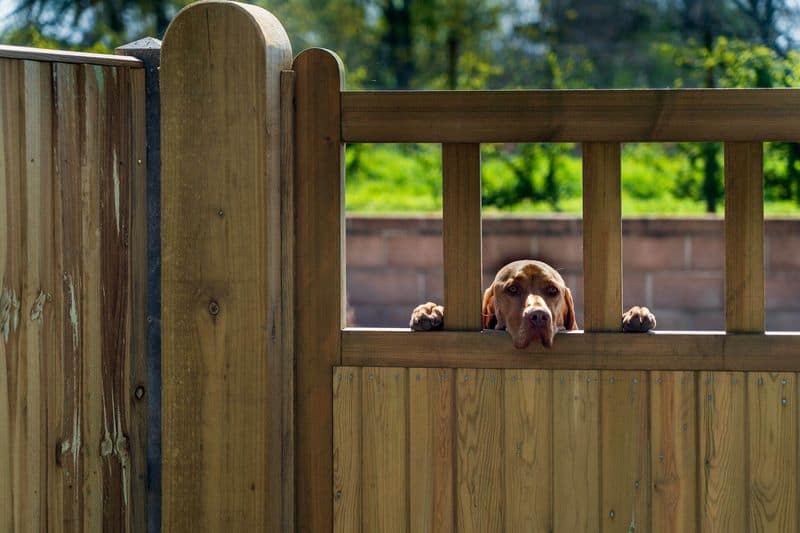
A secure fence is essential to keep your dog safe and prevent them from wandering off. Choose a fence that is high enough to prevent jumping and sturdy enough to withstand attempts to escape.
Consider using materials that are both durable and aesthetically pleasing to complement your garden design. Check regularly for any gaps or weaknesses that could allow your dog to slip through.
A well-maintained fence provides peace of mind, allowing your pet to roam freely and safely within your garden.
4. Use Safe Mulch
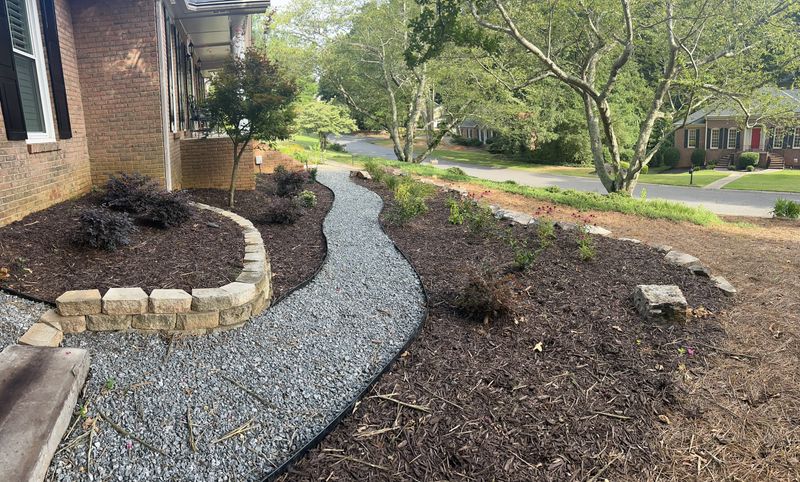
Mulch is great for moisture retention and weed control, but some types can be harmful to dogs. Avoid cocoa mulch, which contains theobromine, a substance toxic to dogs.
Instead, opt for pet-safe varieties like cedar or pine mulch. These mulches are not only safe but also effective in keeping your garden healthy.
Spread mulch evenly to cover sharp edges and hard surfaces, offering a comfortable walking area for your dog.
Choosing the right mulch ensures that your garden remains both beautiful and dog-friendly.
5. Provide Shade and Shelter
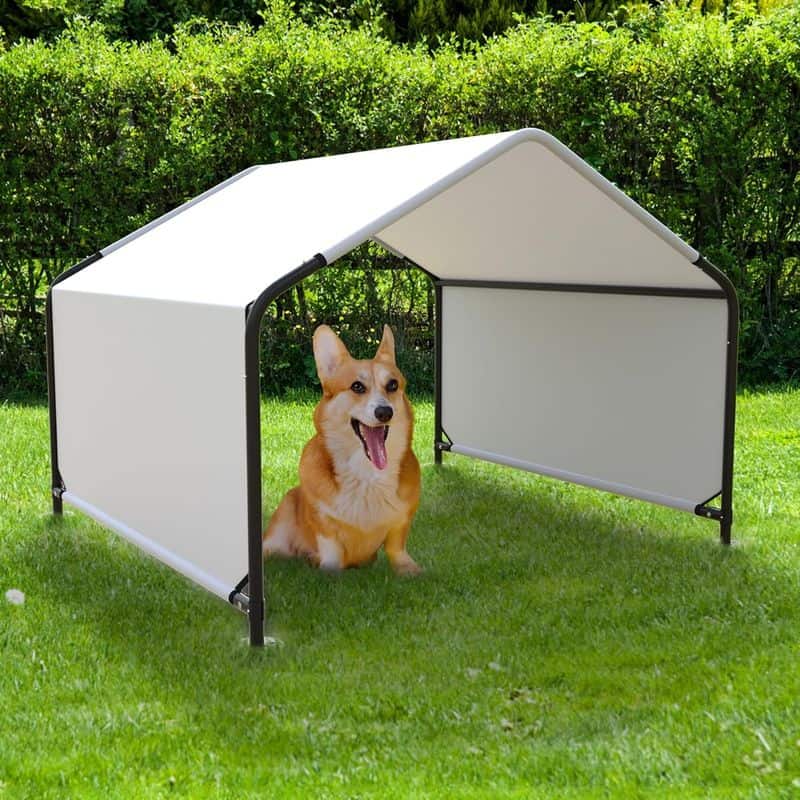
Just like humans, dogs need protection from the sun and elements. Ensure there’s ample shade in your garden, whether from trees, shrubs, or a specially built shelter.
A shaded resting spot will provide your dog with a cool area to relax on hot days, helping to prevent heatstroke.
Also, offering shelter from rain ensures your dog can enjoy the garden regardless of the weather. Creating these comfort zones makes your garden a welcoming space for your canine friend all year round.
6. Install a Water Feature
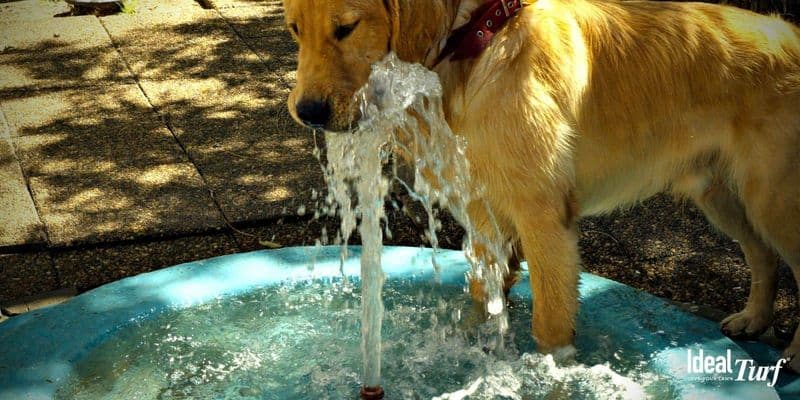
A water feature can be both a beautiful and functional addition to your garden. Consider installing a small fountain or pond that is safe for dogs to drink from and play in.
Ensure the water is clean and regularly maintained to prevent any health issues.
A water feature not only adds a soothing sound but also provides a refreshing spot for your dog to hydrate, especially during warm weather.
This delightful addition can make your garden a favorite hangout spot for your pet.
7. Build Safe Pathways
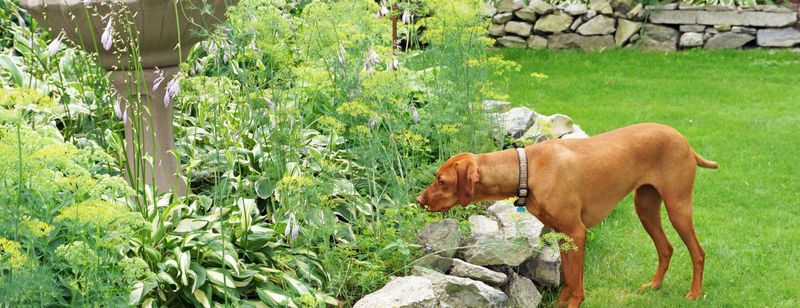
Pathways guide your dog through the garden and protect your plants from being trampled. Use materials that are safe and comfortable for paws, such as smooth stones, bricks, or wood chips.
Clearly defined paths can help direct your dog’s movement, reducing the chance of accidental damage to your plants.
Designing paths with gentle curves and interesting routes adds character to your garden while keeping your dog safely on track. Consider this an opportunity to enhance both functionality and aesthetics.
8. Incorporate Safe Toys
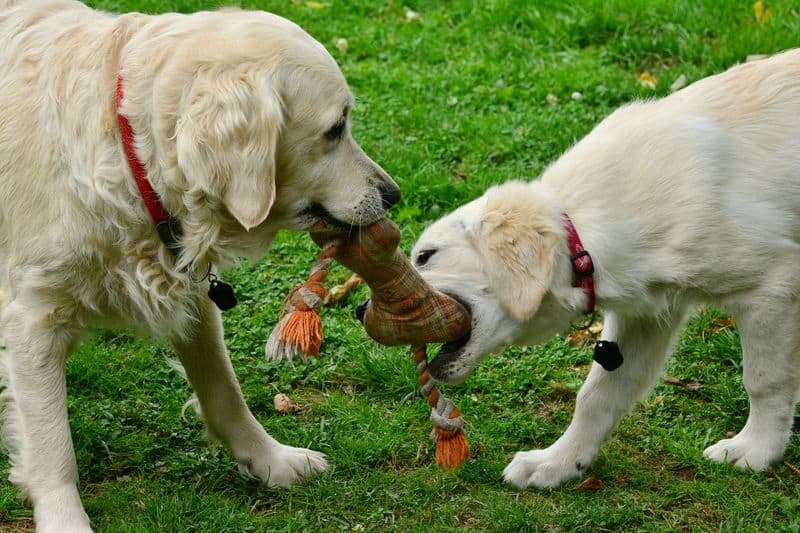
Having toys in the garden keeps your dog entertained and distracted from potentially harmful plants or areas. Choose durable, non-toxic toys that can withstand outdoor conditions and rough play.
Rotating toys regularly ensures your dog remains interested and engaged. Provide a variety of textures and types to stimulate your dog’s senses. Interactive toys are also excellent for mental stimulation.
Keeping your dog entertained in the garden helps prevent boredom and encourages positive behavior.
9. Use Animal-Friendly Fertilizers
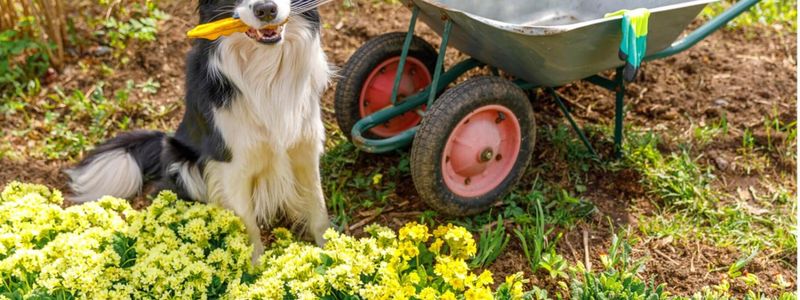
Fertilizers help your garden grow, but not all are safe for pets. Choose animal-friendly fertilizers that won’t harm your dog if ingested. Look for organic or natural options free from harmful chemicals.
Apply fertilizers according to the instructions and store them safely away from curious paws. Using safe fertilizers ensures your garden thrives without compromising your dog’s health.
This mindful approach to gardening fosters a safe, healthy, and beautiful environment for everyone to enjoy.
10. Designate a Play Zone
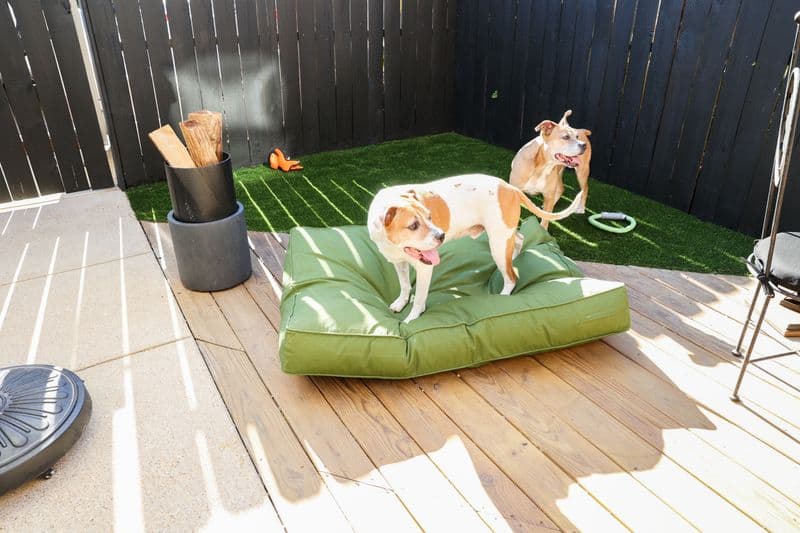
Creating a designated play zone in your garden gives your dog a space to run and exercise freely. Equip this area with agility equipment, balls, and other engaging toys.
Encourage regular playtime to keep your dog fit and happy, while also minimizing disruption to other parts of the garden.
A dedicated play zone helps focus your dog’s energy in one area, making it easier to maintain the rest of your garden.
This thoughtful design balances fun and functionality in your garden space.

